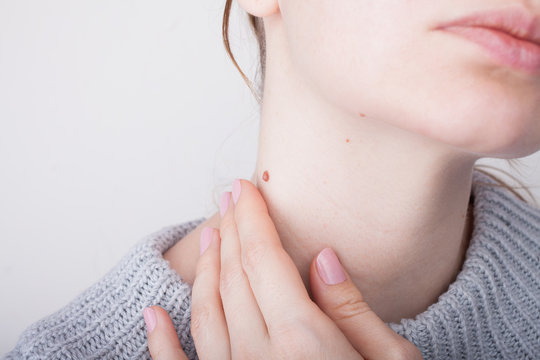
When you opt for Skin Tag Removal in Dubai, it’s essential to be aware of the potential signs of infection that could follow the procedure. Skin tags are generally harmless growths that many people choose to have removed for cosmetic or comfort reasons. However, like any procedure involving the skin, there’s always a risk of complications, including infection. Recognizing the early signs of infection after skin tag removal can help ensure that you address the issue promptly and avoid further complications. In this article, we’ll explore the common signs of infection after the removal process and provide tips on how to care for your skin post-procedure.
1. Increased Redness and Swelling
One of the most common signs that infection might be developing after skin tag removal is an increase in redness and swelling around the treated area. While some swelling and redness can be expected immediately after the procedure, it should start to subside within a few hours or days. If you notice that the redness is expanding or the swelling is getting worse instead of improving, it could indicate an infection. In such cases, it’s important to monitor the area carefully and seek medical advice if the symptoms persist.
2. Pus or Discharge
A skin tag removal wound may ooze a small amount of clear fluid in the first few days as it heals. However, if you notice thick, yellow or greenish pus coming from the wound, this is a strong indicator of an infection. The presence of pus suggests that bacteria have entered the wound, causing the body to produce the thick fluid as part of the immune response. If you notice pus or any abnormal discharge, it’s crucial to clean the area gently, apply antiseptic, and consult a healthcare professional.
3. Pain and Tenderness
After skin tag removal, it’s normal to experience some mild discomfort at the site of the procedure. However, if you begin to feel increasing pain or tenderness days after the removal, it could be a sign of infection. Infections tend to cause an escalation of pain that doesn’t subside, unlike typical post-procedural discomfort, which should gradually improve. If the pain becomes severe or is accompanied by other symptoms like fever or redness, it’s important to seek medical attention.
4. Fever or Chills
A fever or chills after skin tag removal is a clear sign that your body is fighting off an infection. While not everyone who experiences an infection will develop a fever, the combination of elevated body temperature and chills should not be ignored. This may indicate that the infection has spread beyond the skin and could require more intensive treatment. If you develop a fever in the days following your procedure, it’s essential to consult with a healthcare provider.
5. Foul Odor
Another indication that your wound may be infected is the presence of a foul odor coming from the area. The skin tag removal site should not have any strong or unpleasant smell. If you detect a noticeable odor, this could be a sign that bacteria are multiplying at the site, leading to infection. It’s essential to clean the wound thoroughly, but do not ignore the odor, as it could be a sign of an advanced infection.
6. Delayed Healing or Formation of a Scab
A normal healing process after skin tag removal involves the wound gradually closing up with minimal complications. However, if you notice that the healing process is delayed or if the wound forms an unusually large or irregular scab, it could indicate an infection. An infection can prevent the wound from healing properly, leading to scarring or other complications. Keeping the area clean and following aftercare instructions carefully can help promote faster healing and prevent infection.
7. Warmth Around the Area
When an area of the body becomes infected, it often feels warm to the touch. This is due to increased blood flow as your immune system tries to fight off the infection. If the skin around the wound feels warm or hot and this sensation persists, it may indicate that an infection is present. This warmth, along with other symptoms like redness or swelling, should not be ignored.

How to Prevent Infection After Skin Tag Removal
Preventing infection after skin tag removal is crucial for a smooth and fast recovery. Here are a few essential tips to keep in mind:
-
Follow Aftercare Instructions: Always adhere to the aftercare guidelines provided after your procedure. This may include cleaning the wound, applying ointments, and keeping the area covered.
-
Keep the Wound Clean and Dry: Gently clean the wound with mild soap and water, and avoid using harsh chemicals or alcohol that could irritate the area.
-
Avoid Scratching or Picking at the Wound: As tempting as it may be, refrain from scratching or picking at the removal site to avoid introducing bacteria.
-
Wear Loose Clothing: Wearing tight clothing over the affected area can cause friction, which can irritate the wound and increase the risk of infection.
When to Seek Medical Attention
If you experience any of the signs of infection mentioned above, it’s important to seek medical attention immediately. Infections can spread rapidly, and early treatment can prevent serious complications. A healthcare provider will be able to assess the situation, determine the severity of the infection, and recommend the appropriate treatment.
Conclusion
Although Skin Tag Removal Dubai is generally a safe and straightforward procedure, understanding the potential risks—such as infection—is essential for a smooth recovery. By being vigilant and monitoring for any signs of infection, you can address the issue early and ensure that your healing process goes as smoothly as possible. Remember to follow all aftercare instructions and consult a healthcare provider if you experience any symptoms of infection to protect your health and wellbeing.